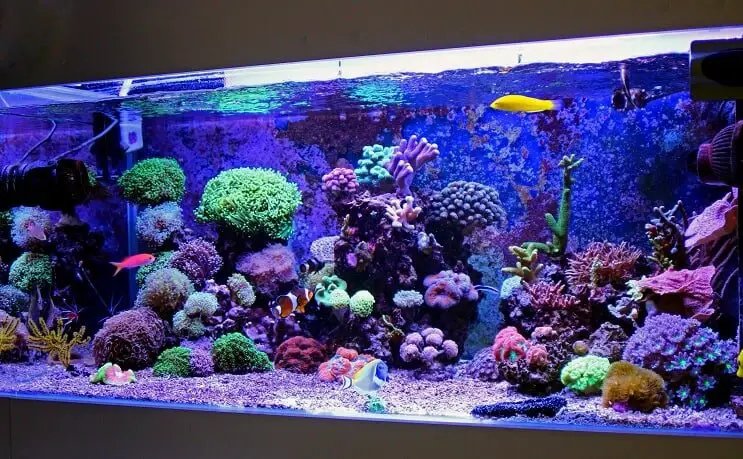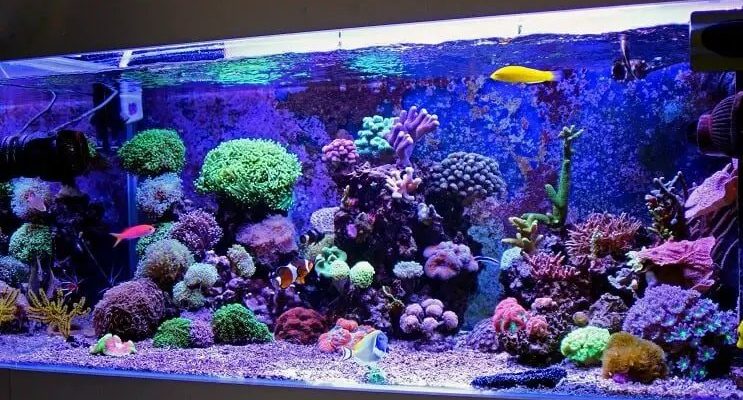
Maintaining water quality is like cooking a gourmet dish. You need to balance flavors, know your ingredients, and pay attention to details. If you toss in too much salt or forget the right temperature, the dish fails—just like an imbalanced saltwater tank. This guide will walk you through the essential steps to ensure your aquatic friends are swimming in the best conditions possible.
Before diving into maintenance tips, let’s lay down some foundational knowledge. A saltwater tank replicates the natural environment of marine life. That means the right combination of salt, temperature, pH, and other elements is crucial. Simply put, you can’t just fill a tank with water and salt and expect it to work.
Saltwater tanks often have live rock, which not only provides a beautiful environment but also helps with biological filtration. It’s like having a natural filter right in your tank. The rocks and sand harbor beneficial bacteria that break down waste products, keeping the water clean. However, this system needs monitoring and care to function properly.
You might be wondering, “What’s the difference between freshwater and saltwater tanks?” Here’s the scoop: saltwater tanks typically require more precise conditions. Freshwater fish can be a bit more forgiving, while saltwater species are often more sensitive to fluctuations in their environment. This is why understanding the key factors that affect water quality is vital.
Testing the water in your saltwater tank should be like a routine check-up for your health. It’s essential to monitor the levels of ammonia, nitrite, nitrate, pH, salinity, and temperature. These parameters will tell you a lot about the health of your tank.
Ammonia and nitrite levels should ideally be at zero; these are toxic to fish. If either of these levels rises, you might need to perform a water change or look into your filtration system. Nitrate is less harmful but should be kept below 20 ppm (parts per million) for optimal health.
Most aquarium stores sell water testing kits, which often include easy-to-follow instructions. You can also find digital meters for more precise readings. Testing your water once a week is a good habit to get into, especially when your tank is new or if you’ve recently added fish.
The Importance of Water Changes
One of the best ways to maintain water quality is through regular water changes. Think of it like refreshing your drinking glass after a long day. Over time, waste products build up in the tank, so simply letting the water sit isn’t enough.
A good rule of thumb is to change about 10% to 20% of the water every week. This helps dilute harmful substances and replenish vital minerals. Here’s a quick guide on how to do a water change:
- Gather your supplies: a siphon, a bucket, and a water conditioner.
- Siphon out the old water from the bottom of the tank, avoiding disturbing the substrate too much.
- Replace the removed water with fresh, conditioned saltwater at the same temperature.
- Monitor the tank after the change to ensure everything looks good.
Remember, changing too much water at once can shock your fish, so stick to the recommended amounts!
Maintaining Filtration Systems
Your filtration system is like the heart of your saltwater tank, pumping clean water and removing waste. There are different types of filters, such as hang-on-back, canister, and sump systems. Regardless of which type you use, keeping it clean is crucial for maintaining water quality.
Here’s how to keep your filter in top shape:
- Clean the filter media in tank water at least once a month. This preserves beneficial bacteria.
- Check and replace cartridges as recommended. A clogged filter can’t do its job!
- Ensure the filter is sized correctly for your tank. An underpowered filter can lead to poor water quality.
If you’re using a protein skimmer, make sure it’s working well, too. It helps remove organic waste before it breaks down into harmful substances, which is super important for saltwater tanks.
Controlling Algae Growth
Algae can be both a friend and a foe in your tank. While it plays a role in the ecosystem, too much algae can cover your beautiful decorations and harm fish health. To keep it under control, focus on these factors:
- Lighting: Excessive illumination can promote algae growth. Aim for around 10-12 hours of light per day.
- Nutrient Balance: Algae thrives on nitrates and phosphates. Regular water changes and proper feeding will help keep these levels low.
- Cleanup Crew: Consider adding herbivorous fish like tangs or snails to munch on algae. They’re nature’s little housekeepers!
If algae starts blooming, don’t panic. You can tackle it with a combination of water changes, reducing light exposure, and introducing algae-eating species.
Feeding Practices and Their Effect on Water Quality
What you feed your fish directly impacts the water quality in your saltwater tank. Overfeeding can lead to food particles decomposing and raising ammonia levels. Here’s how to avoid this pitfall:
- Feed small amounts that your fish can eat in a few minutes. You might feel generous, but remember: less is more!
- Consider using a high-quality food that meets your fish’s nutritional needs. Some foods are designed to produce less waste.
- Don’t forget to remove any uneaten food after feeding time. This simple step can significantly reduce waste buildup.
By keeping an eye on your feeding practices, you can help maintain a healthier environment for your fish.
Monitoring Temperature and Salinity
Keeping the right temperature and salinity is crucial in a saltwater tank because even the slightest changes can stress your fish. Most marine fish thrive at temperatures between 75°F to 80°F (24°C to 27°C) and salinity levels around 1.020 to 1.025 specific gravity.
To monitor these parameters:
- Invest in a reliable thermometer and salinity meter (refractometer or hydrometer).
- Check the temperature daily and adjust it as needed, especially if your tank is near a heat source.
- To maintain salinity, use a quality salt mix and add freshwater as needed to replace evaporation.
Remember, fluctuations can lead to stress or illness in your fish, so keeping an eye on these elements is critical for your tank’s stability.
In conclusion, maintaining water quality in a saltwater tank involves a combination of proactive and reactive measures. By understanding your tank’s environment and establishing a routine, you’ll create a vibrant underwater world full of healthy, happy fish. Always stay attuned to your tank’s needs, and you’ll ensure it remains a thriving home for your aquatic friends. Happy fishkeeping!

